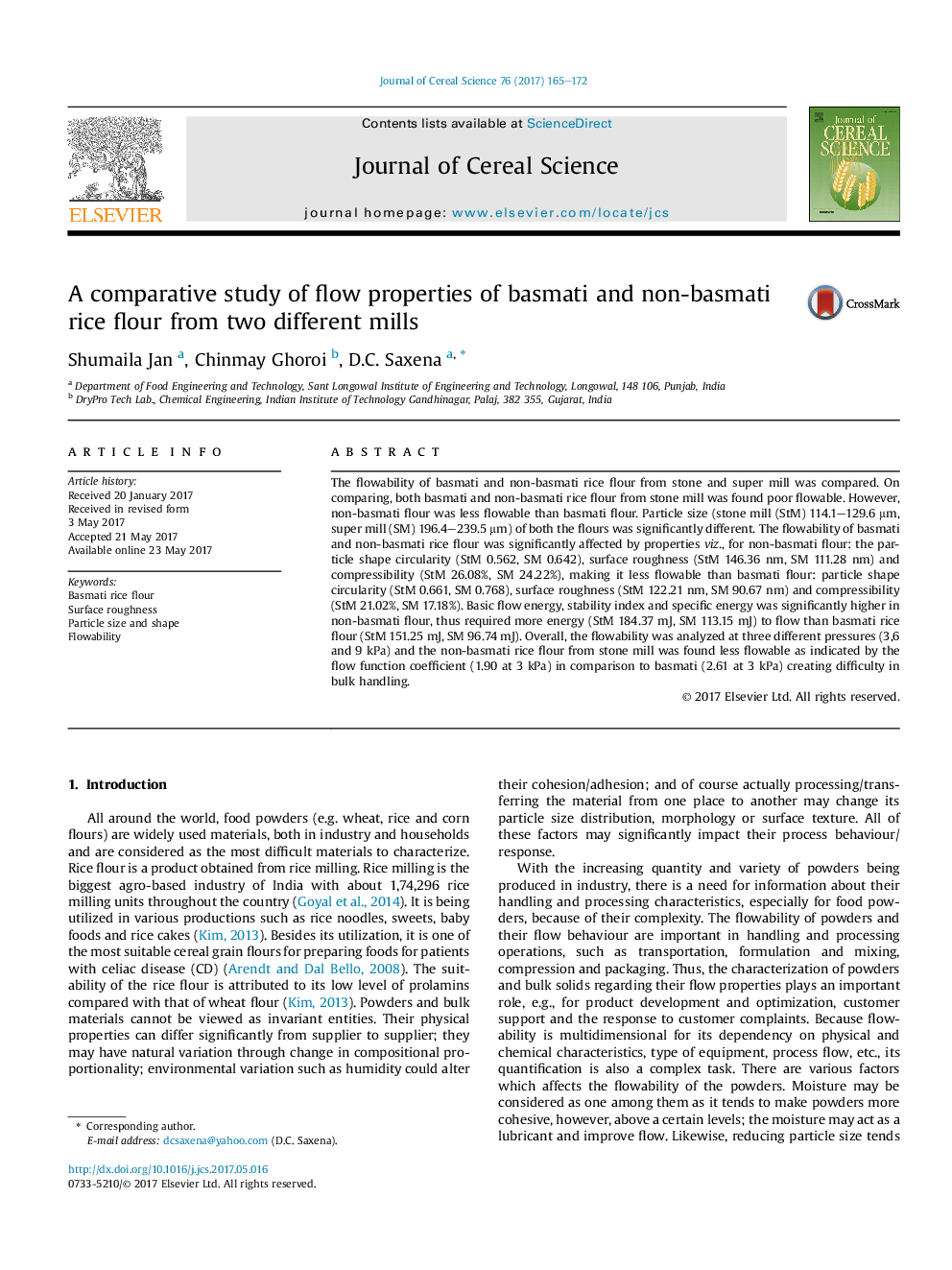| Article ID | Journal | Published Year | Pages | File Type |
|---|---|---|---|---|
| 5762324 | Journal of Cereal Science | 2017 | 8 Pages |
Abstract
The flowability of basmati and non-basmati rice flour from stone and super mill was compared. On comparing, both basmati and non-basmati rice flour from stone mill was found poor flowable. However, non-basmati flour was less flowable than basmati flour. Particle size (stone mill (StM) 114.1-129.6 μm, super mill (SM) 196.4-239.5 μm) of both the flours was significantly different. The flowability of basmati and non-basmati rice flour was significantly affected by properties viz., for non-basmati flour: the particle shape circularity (StM 0.562, SM 0.642), surface roughness (StM 146.36 nm, SM 111.28 nm) and compressibility (StM 26.08%, SM 24.22%), making it less flowable than basmati flour: particle shape circularity (StM 0.661, SM 0.768), surface roughness (StM 122.21 nm, SM 90.67 nm) and compressibility (StM 21.02%, SM 17.18%). Basic flow energy, stability index and specific energy was significantly higher in non-basmati flour, thus required more energy (StM 184.37 mJ, SM 113.15 mJ) to flow than basmati rice flour (StM 151.25 mJ, SM 96.74 mJ). Overall, the flowability was analyzed at three different pressures (3,6 and 9 kPa) and the non-basmati rice flour from stone mill was found less flowable as indicated by the flow function coefficient (1.90 at 3 kPa) in comparison to basmati (2.61 at 3 kPa) creating difficulty in bulk handling.
Related Topics
Life Sciences
Agricultural and Biological Sciences
Agronomy and Crop Science
Authors
Shumaila Jan, Chinmay Ghoroi, D.C. Saxena,
